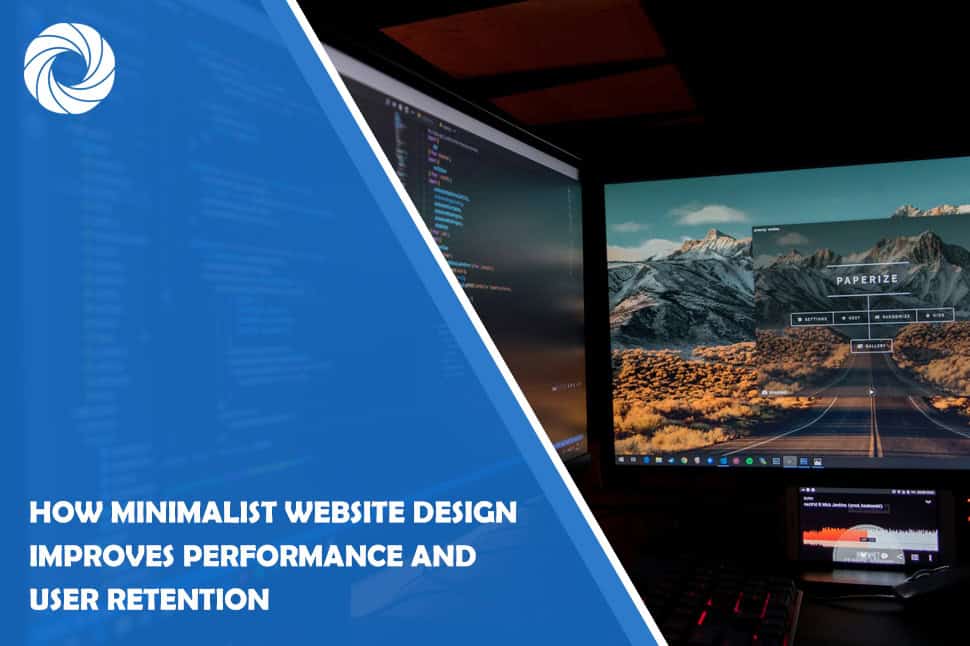Capturing and retaining user retention is important in the current fast-paced digital era. Modern internet users demand speed and a seamless experience, leaving little room for slow or cluttered websites. This is why minimalism in web design is a game changer. It offers a clean, user-focused approach that enhances visual appeal and boosts site performance.
Minimalist web design is based on “less or more.” This means removing unnecessary elements while focusing on functionality and purposeful content. Besides aesthetics, this approach profoundly affects the website’s technical performance and user interaction. Below are three ways minimalist web design improves performance and retains users.

1. Faster Loading Speeds
With reduced attention spans, a website’s loading speed can make or break its success. Sites with faster loading speeds are a necessity. Minimalist web design plays a vital role in achieving this. Removing unnecessary elements like excessive graphics and videos significantly reduces page weight. Minimalism in web design improves loading speed by:
- Streamlined code: Minimalism in web design improves user leaner code. This reduces server processing time and enables quick rendering.
- Organized media: The focus on simplicity means using small, optimized images. Light and fewer multimedia elements reduce load times.
- Few HTTP requests: Minimalism requires fewer scripts and fonts, which minimizes the number of HTTP requests required to load website pages.
Minimal websites work seamlessly across all devices. Beyond user satisfaction, business websites experience tangible benefits, including better conversion rates and enhanced brand credibility. Fast-loading sites encourage visitors to explore more pages, increasing engagement while reducing bounce rates.
2. Better SEO Performance
Search engine optimization ensures that your business website is visible to potential users. Well-optimized sites rank higher in search engine results, attracting more organic traffic. Minimalist web design focuses on simplicity and functionality, improving SEO performance. Prioritizing important elements and reducing clutter results in a user and search-engine-friendly site.
For starters, page speed is an important ranking factor. Websites that load faster provide a better user experience. This leads to low bounce rates and longer session durations. Minimalism in web design helps achieve faster loading speeds by eliminating unnecessary clutter like large images and videos. This streamlined approach reduces server load and page weight, directly improving SEO rankings.
Similarly, with mobile devices accounting for a good percentage of web traffic, search engines prioritize mobile-friendly sites. Minimalist site designs are very responsive and adapt seamlessly to different screen sizes. This gives mobile device users an optimal experience, a factor that heavily influences site rankings. Site owners should engage professionals like Bizango to design stellar websites.
3. Simplified Navigation
Navigation significantly influences user experience. It determines how site visitors find information and complete desired actions. Simplified navigation is the hallmark of web design. It ensures a seamless browsing experience, which benefits users and businesses. Site visitors come to the website with specific goals. These may be learning, shopping, or connecting. Simplified navigation provides a clear roadmap, which makes it easier for users to find what they need without confusion.
A complex layout and overwhelming menu slow down decision-making. Simplified site navigation eliminates unnecessary options, giving users straightforward options. Such clarity reduces cognitive load.
Endnote
Minimalism is more than a trend. It is a strategy that improves performance and user retention by allowing visitors to focus on what matters the most. Prioritizing speed, readability, and user experience allows websites to meet the demands of modern audiences.
